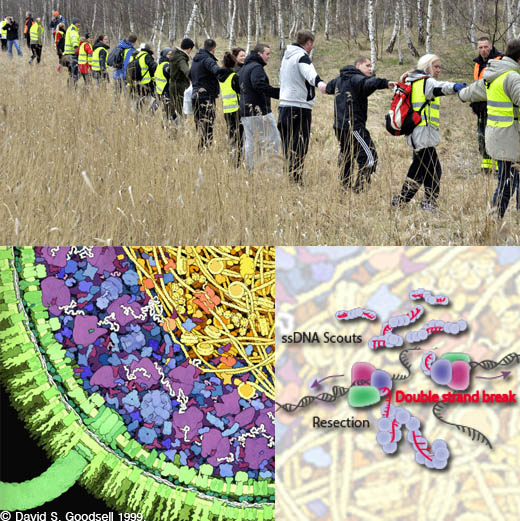POSTS
Homologous Recombination Explained?
A double strand break in the chromosome means trouble for any organism and the only hope resides in finding an intact copy of the break side on another chromosome. When this homologues sequence is localized, a genetic exchange takes place and both chromosomes walk away with one complete sequence. The cell is saved.

Science has presented detailed descriptions of the different steps in this homologous recombination process, all but one. According to the classical model, the broken ends randomly probe the DNA by base paring in search for the homologous sequence. If the correct site is not in absolute proximity, weeks of interrogation would be required even with a chromosome diffusing like a small molecule. Needless to say, it is not.
If the classical model is correct, homologues recombination would simply not work when the homologues sequences are not close, yet an overwhelming amount of experimental data claims that it does. We can only speculate at what might resolve this inconsistency, but a parallelized search by DNA or RNA scouts somehow produced at the break site is an attractive hypothesis. A thorough examination of available experimental observation reveals details that make this solution all the more likely. However, experimental verification of the theory is yet a challenge… Any takers?
A complete description of the hypothesis is presented in Cell systems